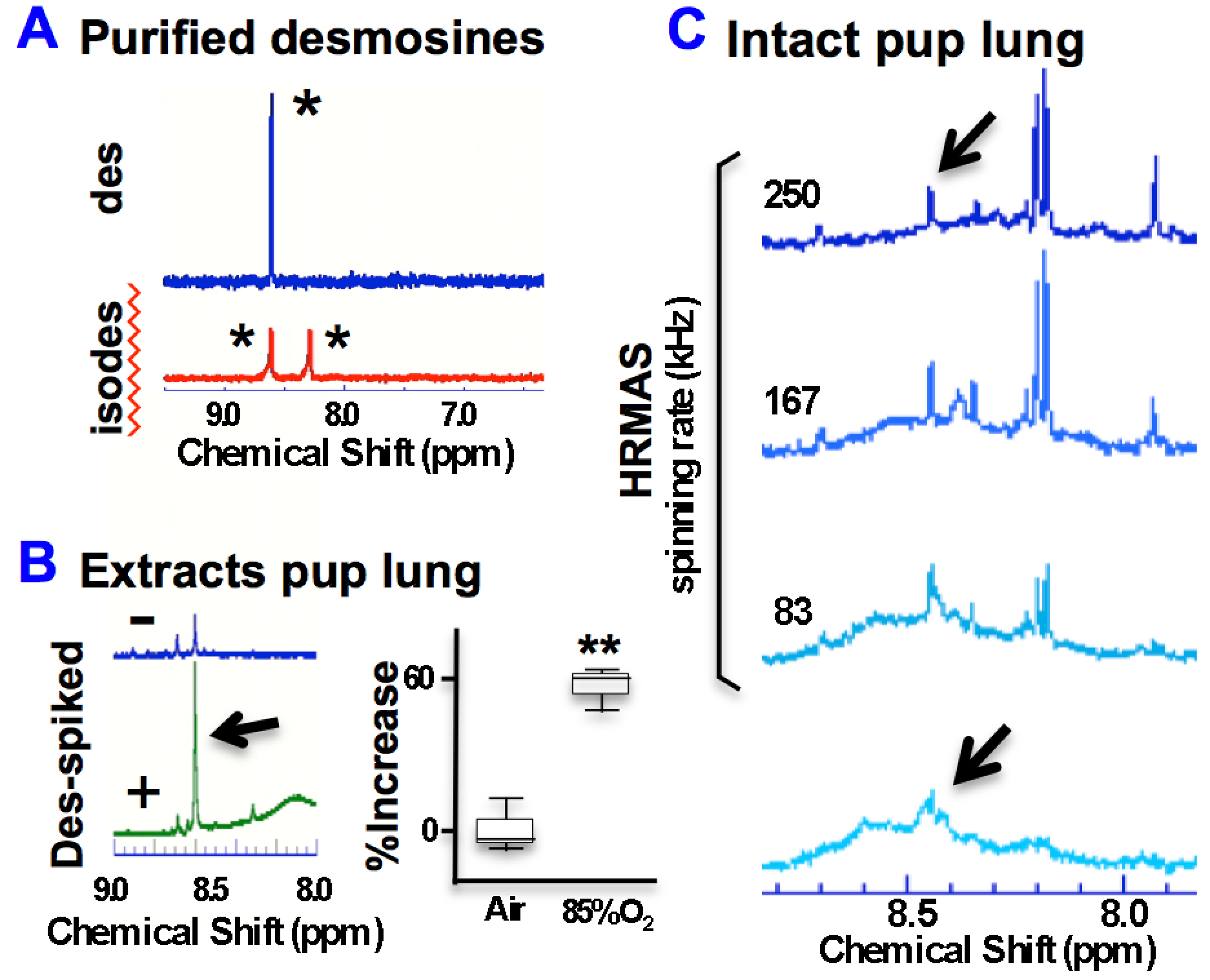Neonatal Pulmonology
Neonatal Pulmonology 6: Oxygen, Steroids
163 - Detection of desmosines in the O2-injured newborn mouse lung using 1H NMR spectroscopy
Monday, May 1, 2023
9:30 AM - 11:30 AM ET
Poster Number: 163
Publication Number: 163.438
Publication Number: 163.438
Jesse Roberts, Harvard Medical School, Charlestown, MA, United States; Leo L.. Cheng, Harvard Medical School, Charlestown, MA, United States

Jesse Roberts, Jr., MD (he/him/his)
Associate Professor
Harvard Medical School
Charlestown, Massachusetts, United States
Presenting Author(s)
Background: Des (desmosine and isodesmosine) are unique amino acids that constitute the cross-links between elastin molecules and contribute to tissue elasticity. Des production and localization are dysregulated during newborn lung injury; increased Des is detected in the lungs of mouse pups and preterm lambs with pulmonary injury and in the tracheal aspirate fluids and urine of preterm infants developing bronchopulmonary dysplasia. However, currently used immunologic and separation methods that quantify Des suffer from low sensitivity and require extensive sample purification to facilitate its detection. These have inhibited the widespread measurement of Des in research and clinical work as a biomarker of newborn lung injury.
Objective: Recently, 1H NMR spectroscopy has been shown to be able to quantify select biomolecules with high sensitivity and specificity. However, Des has a complex molecular structure and its spectra might be difficult to distinguish from those of other compounds in biological samples. In this work, we explored the utility of NMR spectroscopy in detecting Des in the mouse pup lung.
Design/Methods: We noted that Des harbors a pyridinium-salt ring that is generally not present in other mammalian biologic compounds. Therefore, we tested whether this ring’s electron cloud might de-shield the nuclei of its attached hydrogen atoms and enable the detection of Des in specimens by causing a unique downfield shifted peak in a relatively quiet part of the 1H spectra.
Results: First, we confirmed that the 1H NMR spectra of solubilized, purified bovine ligament Des exhibit a downfield resonance signal that is characteristic of aromatic ring protons and precisely aligns with a peak detected in solubilized postnatal day 21 (P21) mouse pup lungs. Then using a ~200 mg intact sample of pup lung tissue and high-resolution magic angle spinning NMR spectroscopy, we detected decreased broadening of this signal confirming the expected anisotropic interactions of the protons in intact elastin. We also found that 1H NMR spectroscopy detects Des in hydrolyzed P21 pup lung with high sensitivity; the unshielded spectra were detected even at dilutions that were < 50% the amount that was reported to be required for Des detection using other methods. Lastly, in pilot studies we determined that 85% O2-mediated lung injury in P21 mouse pups caused a ~60% increase in the unshielded Des spectral signal levels in solubilized lung samples comparison with controls (n=3 each group).
Conclusion(s): Together, these studies suggest that NMR spectroscopy can be used to detect Des in complex and solubilized lung tissue samples.

